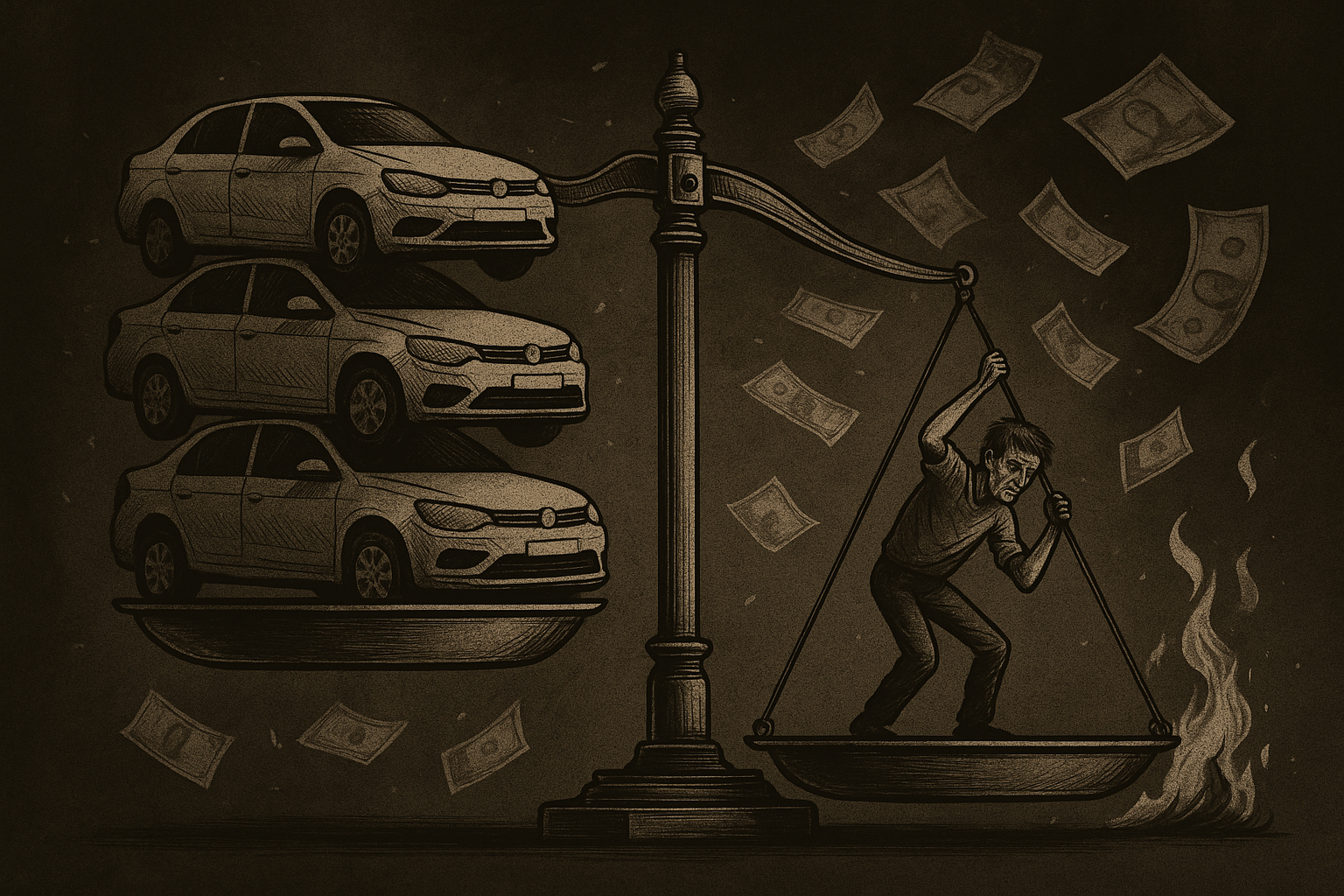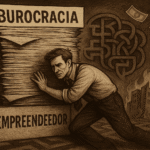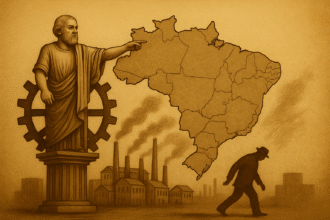While the government injects billions into incentive programs and tax breaks for “strategic” sectors, such as the automobile industry, ordinary citizens pay the bill: persistent inflation, rising public debt and currency devaluation. History repeats itself in a new guise, but the plot is the same — the market is distorted and the State emerges as the hero of a disaster that it itself caused.
The return of interventionism: packages for some, taxes for all
In June 2023, the federal government relaunched an incentive program for the automobile industry with a value of up to R$ 1.5 billion in subsidies for the sale of popular cars. The argument was predictable: stimulate consumption, preserve jobs and stimulate the economy. But what seems like a noble gesture hides, in practice, an old and inefficient policy: the indirect transfer of income from taxpayers to privileged sectors.
According to S.Paulo Newspaper, the benefit involved tax discounts aimed at automakers that reduced the final price of vehicles, creating an artificial stimulus to demand.
The problem is structural. These packages do not come from the “government” — they come from society. The resources spent to subsidize a “popular” car are the same as those needed to contain inflation, reduce debt or ease the tax burden.
Inflation as an invisible tax
The belief that the State can “help the economy” by distributing favors ignores the macroeconomic impact of this type of intervention. In an environment of growing debt, new subsidies put pressure on the National Treasury, which responds with more debt issuance or, ultimately, with an increase in the monetary base. The result is predictable: loss of currency value, acceleration of inflation and erosion of purchasing power.
Inflation acts as a regressive and invisible tax. It disproportionately affects the poorest, who live on fixed incomes and do not have access to wealth protection instruments. While the automotive sector celebrates the incentives, families see the price of food, cooking gas and public transport continually rise.
This is the perverse paradox: public policies sold as “social assistance” end up impoverishing exactly those they claim to protect.
Debt Explodes—And No One Seems to Care
According to data from Value Invest, the Brazilian government's gross debt reached 75% of GDP in 2024 — the highest level since the beginning of the historical series.
Despite warnings from economists and the negative reaction of the market, official rhetoric continues to bet on fiscal expansion as a driver of growth. This Keynesian illusion ignores the fact that the current environment is completely different from the 2000s: high interest rates, low growth, an indebted population and shaken fiscal credibility.
Financing subsidies with increased debt is a self-destructive cycle. Debt demands more interest, the government needs to raise more funds, country risk increases, private investment declines — and we are back to square one: stagnation with inflation.
Old developmentalism in new clothes
The belief in the State as an inducer of growth is one of the most enduring legacies of statist economic thinking in Brazil. From Vargas to Lula, including JK, Geisel and Dilma, governments of all stripes have resorted to the same recipe: subsidized credit, national champions, sectoral protectionism, tax incentives. They have all failed.
But the discourse remains popular. There is talk of “industrial recovery”, “technological sovereignty”, “productive inclusion” — always with the State as the protagonist and the citizen as an extra.
The problem is that, when choosing sectors to privilege, the government automatically chooses others to punish. The businessman who does not receive subsidies is punished with unfair competition. The consumer who does not buy a car is penalized with inflation. The taxpayer who does not profit from political favors finances the party.
What do subsidy advocates say?
It is common to hear that subsidies are temporary, necessary and that “all countries do them”. But this argument is simplistic.
First, subsidies rarely end. What should last six months ends up lasting two years, and then is renewed under another name. Incentives for the automotive industry, for example, have existed in Brazil since the 1950s — and to this day it is one of the most subsidized sectors in the country.
Second, developed countries that adopt subsidies do so in completely different contexts: with a strong currency, fiscal surpluses and inflation control. Copying the model without the institutional foundations is like using an Olympic athlete's recipe to train a sedentary person.
Third, even in rich countries, subsidies are a constant target of criticism. In the US, for example, the Biden administration has faced criticism for its incentives for green industries, which are accused of inflating costs and distorting competition.
Subsidies are not neutral: they create an elite in the shadow of the State
When a government distributes subsidies, it is defining who wins and who loses — not based on merit or efficiency, but on political criteria. This creates an ecosystem of “office entrepreneurs” who live off relationships with Brasília instead of competing in the market.
This phenomenon is the opposite of free enterprise. Competition is shifted from the productive sector to the political sector. Companies start investing more in lobbying than in innovation. The result is a cartelized, slow and unproductive economy — protected from competition and oblivious to the consumer.
The opportunity cost: what could we do with that money?
All public spending has an opportunity cost. The R$1.5 billion used to subsidize cars could be used to reduce fuel taxes, reduce payroll taxes, reduce the cost of public transportation or even pay off public debt.
More than that: they could simply not be spent. The Brazilian state already collects more than 33% of GDP in taxes — and returns little in services. Reducing the weight of the state is, in itself, a way to improve the economy.
The logic of subsidies is based on a fundamental error: that the state can “create wealth” by redistributing money. But the state can only spend what it takes from someone. In the end, what we have is not redistribution, but a transfer of income from the bottom to the top, from the taxpayer to the political protégé.
Conclusion: the “help” that impoverishes
With each subsidy cycle, the government poses as a benefactor while the taxpayer pays the bill — with inflation, taxes and debt. Brazil does not need new packages. It needs economic freedom, real competition and respect for citizens' money.
Favoritism does not create wealth. It merely masks inefficiencies, protects privileged sectors and deepens economic inequality — not between the rich and the poor, but between the poor and the rich. connected to power and those who pay for it.
It is time to break with the extractive logic that sees the State as the driving force of the economy. The real driving force lies in free exchange, spontaneous innovation, individual responsibility — and the courage to say: We don't need the government to prosper. We just need it to leave us alone.
📢 If you are also tired of seeing the State distribute privileges at your expense, subscribe to our newsletter Economic Radar. Every week, direct analysis of what the newspapers hide — and the market feels.
References:
- S.Paulo Newspaper. Government relaunches incentive program for automakers worth R$1.5 billion. June/2023.
- Value Invest. Public debt reaches 75% of GDP in 2024. March/2024.





